#state hermitage museum
Text
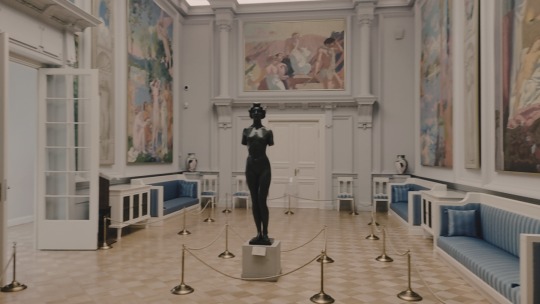
State Hermitage Museum, Saint Petersburg
188 notes
·
View notes
Photo
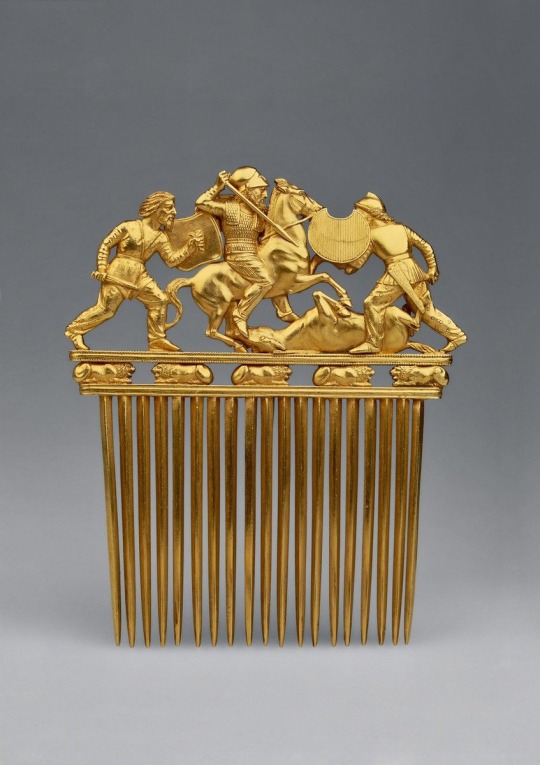
State Hermitage Museum
40 notes
·
View notes
Photo

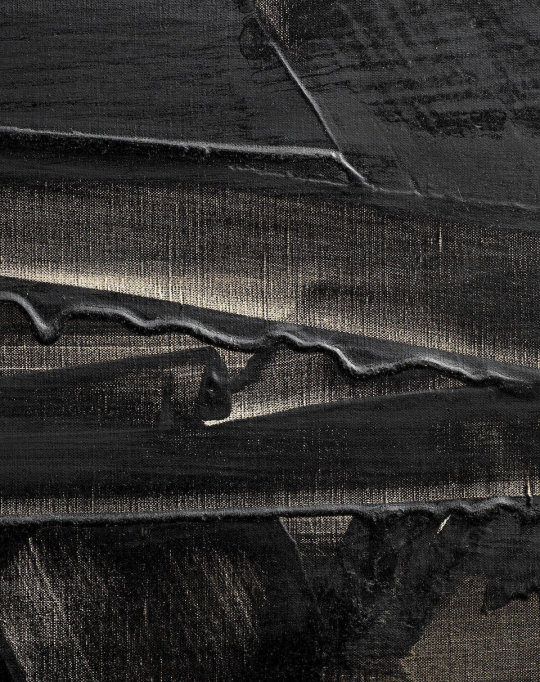

Pierre Soulages (24 December 1919 – 26 October 2022)
Pierre Soulages is considered a major figure of post-war European abstraction, alongside Hans Hartung, George Mathieu, Serge Poliakoff and Jean-Paul Riopelle.
He’s particularly renowned for his “outrenoir” (“beyond black”) series of paintings, which feature matte and glossy black fields interrupted by ridges, scores, and gashes; the artist is interested in how black paint absorbs and reflects light.
Since making his gallery debut in 1947, Soulages has exhibited at the Museum of Modern Art, The Louvre and the State Hermitage Museum (he was the first living artist to show at the institution), and his work has been acquired for the collections of the Centre Pompidou, The Guggenheim, Tate Modern, and the National Gallery of Art in Washington.
Applying the paint in thick layers, Soulages’ painting technique includes using objects such as spoons, tiny rakes and bits of rubber to work away at the painting, often making scraping, digging or etching movements depending on whether he wants to evoke a smooth or rough surface. The texture that is then produced either absorbs or rejects light, breaking up the surface of the painting by disrupting the uniformity of the black.
Peinture 65 x 92 cm, 9 février 1960, 1960, signed; signed and dated 9 Fev 60 on the reverse, oil on canvas, 65 by 92 cm, 25 9/16 by 36 1/4 in. © Bonhams 2001-2020.
#art#paiting#peinture#pierre soulage#rip#rip pierre soulage#abstracart#abstract expressionism#art informel#black#outrenoir#beyondblack#hans hartung#serge poliakoff#state hermitage museum#centre pompidou#guggenheim#tate modern#iconic#bonhams#texture#brush
63 notes
·
View notes
Text

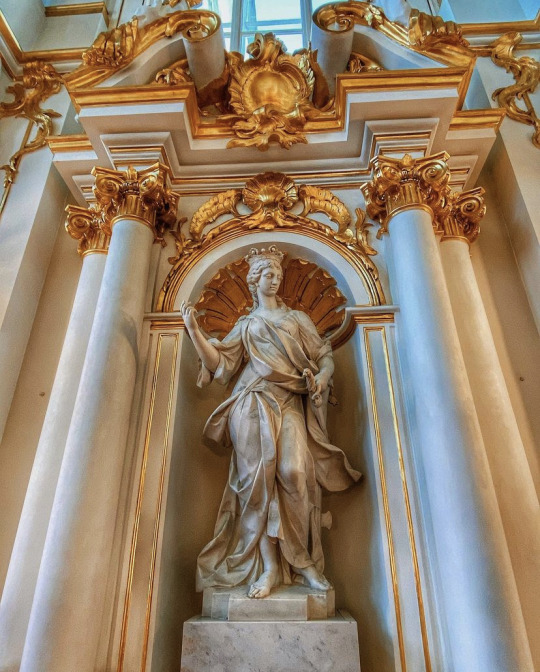
Hermitage Museum, Saint Petersburg (ph: Natasha Kondrashova)
#hermitage#the state hermitage museum#saint petersburg#Russia#art museum#largest art museum#catherine the great#museum of art and culture#museum of art#museum#winter palace#Western European#art#architecture
9 notes
·
View notes
Text

x
1 note
·
View note
Text


Rhyton in the shape of a dog's head, Greece, circa 480 BC
from The State Hermitage Museum, St. Petersburg
2K notes
·
View notes
Text

second half of the 1890s Visiting dress of Empress Alexandra Fyodorovna by workshop of Nadezhda Lamanova (Moscow)
cloth, velvet, silk thread and sequins
(State Hermitage Museum)
1K notes
·
View notes
Text
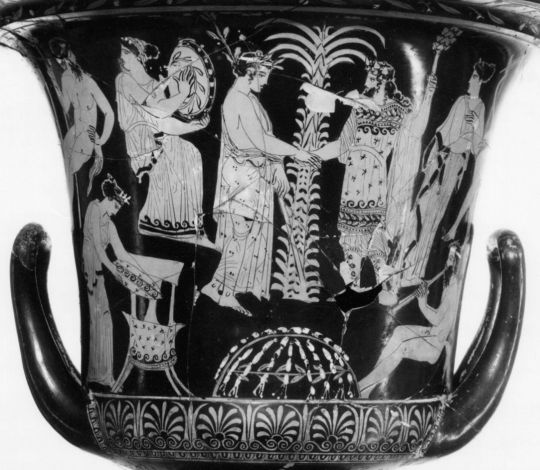
Apollo and Dionysus at Delphi
Attic vase
Fourth century BC.
The State Hermitage Museum, St. Petersburg.
Apollo, with a crown of laurel, is welcomed to Delphi by Dionysus, who is bearded and carrying the thyrsus. Between them is a palm tree, a symbol of Apollo and victory, triumph, peace and eternal life. Beneath them is the Delphic omphalos or navel, center of the world. Behind them is a palm tree, and the other figures are maenads and satyrs, followers of Dionysus.
According to the legends, Apollo entrusted Delphi to his brother Dionysus during winters. Hence during the winter season, only dithyrambs were played in the temple Delphi instead of the usual paeans and the Maenads in turn sang in the honor of Apollo as well.
275 notes
·
View notes
Text

Stela of the Royal Scribe Ipy
New Kingdom, late 18th Dynasty, ca. 1332-1323 BC.
From Saqqara necropolis.
Now in the State Hermitage Museum. ДВ-1072
This stela of Ipy, who held the titles “fan-bearer on the right hand [of the king]”, “royal scribe”, and “great overseer of the royal household”, carries a depiction of its owner making offering to Anubis, the embalmer deity, who is seated at the offering table. The introduction of this subject is an extremely important characteristic of the era.
In earlier times, depictions of deities in private tombs occurred only sporadically, while in the reign of Tutankhamun such scenes of worship began to occupy a central place in them. In this way, people were apologizing to the gods for the abolition of their cults under the previous ruler, Akhenaten. Stylistically the stela is also characteristic of Tutankhamun’s time, when works were produced, especially in the Memphite region, that were marked by the exceptional delicacy and softness of the relief.
Read more
353 notes
·
View notes
Text
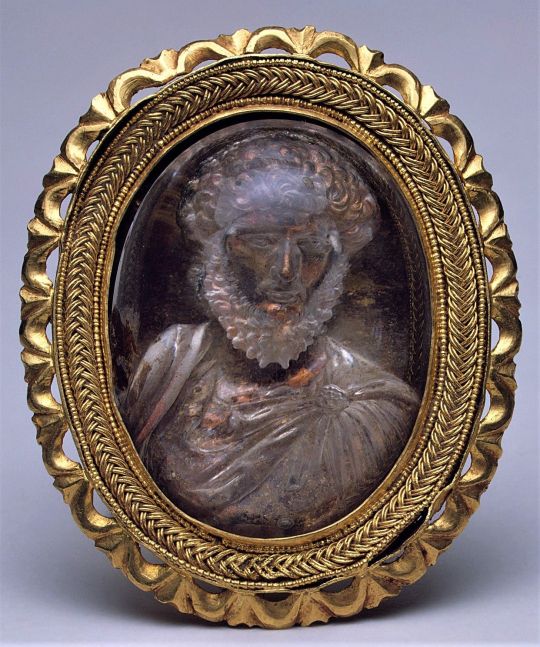
Very handsome intaglio of Lucius Verus, co-emperor of Marcus Aurelius. Now in the State Hermitage Museum, Russia.
#ancient rome#lucius verus#cameo#roman empire#ancient history#roman history#in modern times lucius verus could probably shoot commericals for hair products
301 notes
·
View notes
Text

Court dress of Empress Maria Feodorovna (Sophie Dorothea of Württemberg), 1820s. State Hermitage Museum.
#dark academia#light academia#academia aesthetic#classical#academia#escapism#classic literature#books#books and libraries#architecture#royal core#cottage core#aesthetics#fashion#1800s#19th century#empress#Maria Feodorovna#Sophie Dorothea#Württemberg
544 notes
·
View notes
Text
Your image
˚⁺‧ 𝘱𝘢𝘪𝘳𝘪𝘯𝘨: 𝘢𝘳𝘭𝘦𝘤𝘤𝘩𝘪𝘯𝘰 𝘹 𝘢𝘳𝘵𝘪𝘴𝘵! 𝘳𝘦𝘢𝘥𝘦𝘳
˚⁺‧ 𝘵𝘺𝘱𝘦: 𝘥𝘳𝘢𝘣𝘣𝘭𝘦 (𝘴𝘧𝘸), 𝘯𝘰𝘵 𝘱𝘳𝘰𝘰𝘧𝘳𝘦𝘢𝘥
part one. part two

Hot news were spreading in Snezhnaya. They say, there's an unknown artist by the pseudonym Y/n. The artist's name, gender, age or ethnicity were a mystery.
But what was so interesting about this artist? Well, it seems like they somehow organized an exhibition at Snezhnaya's capital. And not just any exhibition, no, they say that the director of the State Hermitage Museum got so entranced with those paintings, that the museum bought all of them and dedicated an entire hall just for them! The museum director, of course, is the one who organized the exhibition and spread the news.
When you come and see the paintings with your own eyes, it becomes obvious why this exhibition caught the eyes of crowd and news reporters.
There were twenty-one paintings total, in eleven places on each side of the hall. The ones opposing each other seemed to be mirrored in their concept.
The first painting was called "The right hand", it depicted an old man, seemingly in late fourties, with a silver beard and a mask on his face. He was holding a delicate hand that belonged to an aristocratic woman, about to kiss the knuckles.
The second painting was called "Impurity", and what it was depicting was drastically different from the first one: in the center of the painting, there was a knight, covered in blood. He held his greatsword in a way that was covering a snowdrop flower that was just about to bloom, from the bloody rain that seemed to caught the knight.
The third and fourth paintings depicted a surgeon and an angel respectively. One could say these were very roughly drawn, and some rumored they were only there to serve as a filler.
The fifth one is where it becomes interesting, because there is no fifth painting. The next one is, just like the third and fourth, is a not very detailed depiction of an old elf in a silly hat, who is resting from filling out the documents on his table.
The seventh picture depicts a void. By the brush strokes that could be seen if you look close enough, it seemed like in the void, there was a lonely human figure: one could only guess what that means.
The eighth and ninth were paintings of two beautiful women, one of them tinkering a machine, and the other on a rich ball, sipping a glass of champagne.
The last two captured handsome men, one spilling mora out of his pouch to buy a shiny accessory. The very last painting was one of the famous bogatyr who fought in the name of Her Majesty.
If you spend just a little time in Snezhnaya, you would certainly understand why the word about these paintings spread to the furthest corner of the country. Of course, these people were the famous Fatui Harbingers, serving Her Majesty the Tsaritsa. But if you are observant enough, you would notice the lack of a certain one of them. That is precisely why there was no fifth painting.
Because on the opposite wall, there were hanging eleven artworks, depicting the woman that's missing on the other side.
They all were somewhat similar to their counterparts on the first side, but not copying them in the slightest. For example, the second painting of the woman was showing her standing among corpses, with her blade barely visible in the darkness as it was covered in blood. The woman herself was framed by the moonlight shining upon her.
In the ninth painting this woman displayed her handsome beauty. The background was similar to the one in the artwork on the opposite side of the hall; it looked just as if the woman was flirting with the lady she faced.
On the painting that was set in the place "belonging" to this handsome woman, she stood in the doorway, her hand placed on the shoulder of a child, as if she was sending the kid to go play with other girls and boys.
With how present this woman was on the paintings, the crowd almost universally came to the conclusion: the unknown artist was in love with the fourth harbinger. So much so, that instead of drawing one beautiful painting of her, they instead went out of their way and drew eleven.
Many were curious about just how brave this artist was, showing their affection towards the fourth harbinger on their works. Weren't they afraid they'd get arrested for discrediting the country's official?
Others sympathized with the author: poor person, they were so deeply in love with someone they probably aren't meant to be with!.. Just what did the Knave do to receive such love?
And of course there were those who were sceptical. This artist is just one of the Hearth's children, so the Knave bought their way into the museum. Simple nepotism, nothing interesting.
But what was it, truly? Just what thoughts were actually in the artist's head?
Arlecchino chuckled to herself as she exited the museum. She approached her carriage, told the driver to set off back to the House, and mused to herself. Oh, she'll definitely gonna find this mysterious artist...
#genshin#genshin impact#genshin x reader#genshin x you#genshin impact x reader#genshin impact x you#genshin x y/n#genshin imagines#genshin impact imagines#genshin fanfic#arlecchino#arlecchino genshin#arlecchino x reader#arlecchino x you
137 notes
·
View notes
Text
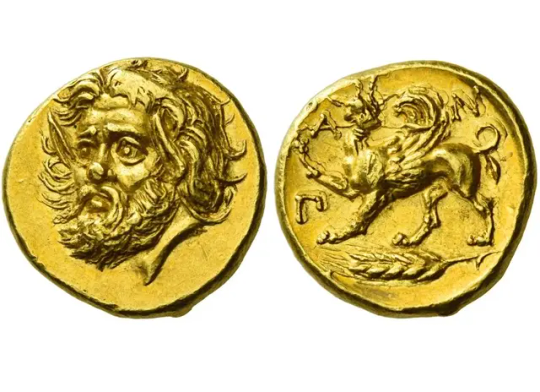
A 2,000-Year-Old Gold Greek Coin Sells for $6 Million at Auction
The coin once belonged to the State Hermitage Museum until it was sold off by Joseph Stalin.
A private collector has spent a pretty penny to get their hands on a 2,000-year-old gold Greek coin.
Known as a Panticapaeum stater, after the ancient Greek city in modern-day Crimea, the coin went for $6 million at Numismatica Ars Classica in Switzerland making it the most expensive ancient coin ever sold at auction.
The soaring price has been attributed to the coin’s quality, rarity, and the fact the supply of similar specimens is extremely limited with most already housed inside museums.
“I am extremely pleased with the phenomenal result the sale of the Panticapaeum stater achieved at our latest auction in Zurich,” Arturo Russo, co-director at Numismatica Ars Classica, said in a statement. “This is a sign the whole market for numismatics is flourishing, and is especially strong for ancients at the moment.”
The coin was minted circa 340–25 B.C.E. and features a wide-eyed satyr on the obverse and that of a griffin gripping a spear in its beak on the reverse. The presence of the satyr, a mischief-maker in Greek mythology that resembles a man with horse ears and a tail, is thought to reference king Satyros I, who ruled a Greco-Scythian empire in eastern Crimea from 432 to 389 B.C.E.
The sharp details make numismatists confident the coin is the work of a master engraver. Unlike similar coins, this Panticapaeum stater features the satyr facing three-quarters to the left, as opposed to facing fully left, a detail experts believe was altered in an attempt to follow contemporary fashions.
The coin was long part of the State Hermitage Museum’s collection, but was sold off in 1934 as part of Stalin’s push to sell works of art to raise foreign currency to fund domestic industrial growth. The coin was acquired by Charles Gillet, a French industrialist who focused on collecting rare books, furniture, and antiquities, including coins.
The previous record for most expensive ancient coin sold at auction was one of only three known “Ides of March” coins, which was minted in 42 B.C.E. and commemorated the assassination of Julius Caesar. It sold at Roma Numismatics auction house for $4.2 million in 2020, though, as it turned out, with falsified provenance.
By Richard Whiddington.

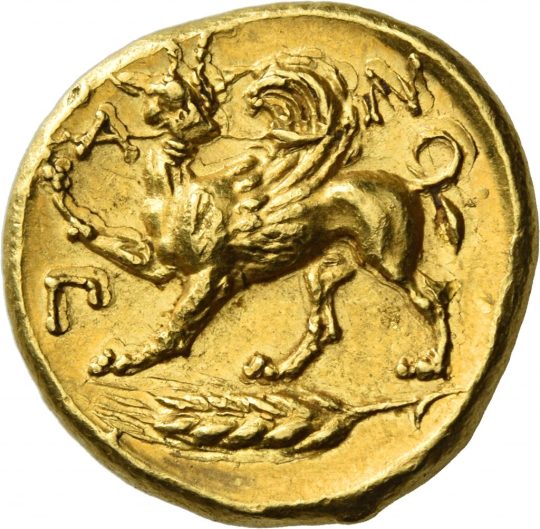
#A 2000-Year-Old Gold Greek Coin Sells for $6 Million at Auction#Panticapaeum stater#king Satyros I#gold#gold coin#ancient coins#ancient artifacts#archeology#archeolgst#history#history news#ancient history#ancient culture#ancient civilizations#ancient greece#greek history#greek art
45 notes
·
View notes
Text

Gold, emerald, and enamel pendant depicting a caravel, Spain, circa 1580.
from The State Hermitage Museum, St. Petersburg
4K notes
·
View notes
Text

1913 Evening dress of Vera Karakhan by House of Paul Poiret
velvet, tulle, silver lace, galloon, silk and metallic threads, polychrome bugles, beads, imitation pearls, silk flowers
(State Hermitage Museum)
1K notes
·
View notes